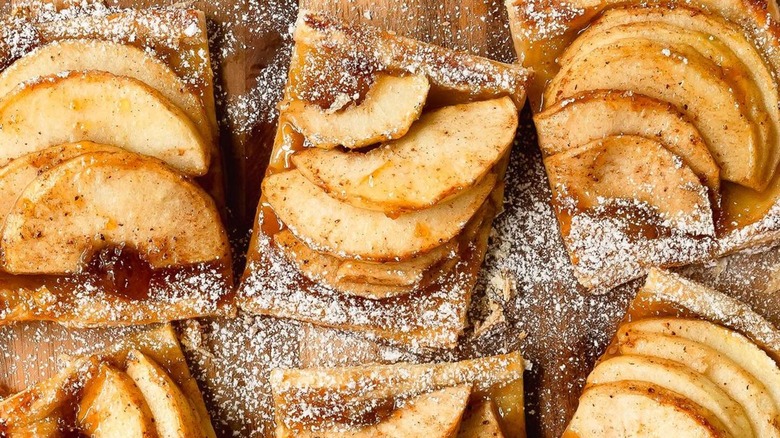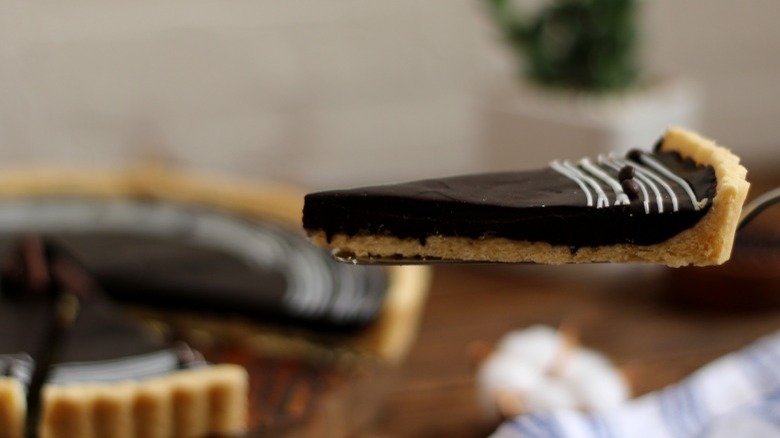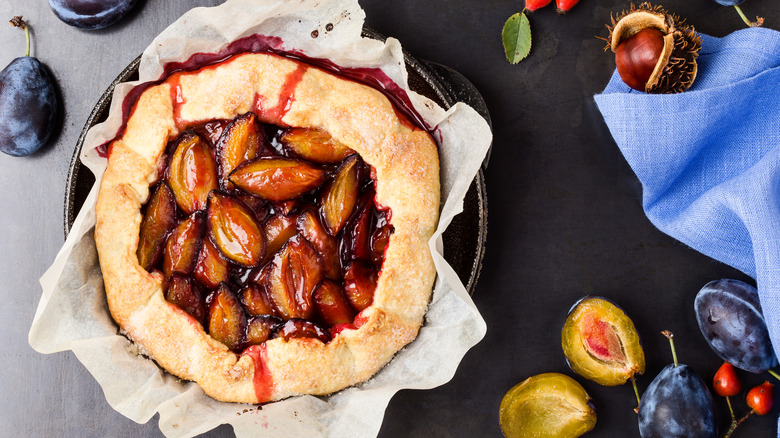The Biggest Difference Between A Galette And A Tart
Though baking is a year-round passion for many, the holiday season means even more of us are stocking up on cozy, homey pie and pastry recipes to wow our loved ones at the end of a decadent meal. Whether you're a veteran pastry chef or an enthusiastic novice, however, parsing through all the complicated terminology and definitions for different types of pastries can get confusing, especially since so many of them seem to overlap.
Galettes and tarts are two such examples. Are they both variations on pie or something different altogether? Does the difference come down to their structure or their ingredients? And where the heck do tortes fit into the tart-galette equation, anyway? The good news is, you can easily bake an apple tart with or without understanding its distinct definition. But if you want to really speak fluent pastry, there are is a key difference that will help you distinguish between these terms.
Both tarts and galettes are considered close cousins of pie. However, unlike pies, which can have a single or double crust, galettes and tarts are both open-faced, with crust structures and fillings that can be either savory or sweet. What differentiates a galette is its rustic free-form composition. Tarts, on the other hand, which are most commonly baked using a specialized pan, are known for their sturdy yet delicate crusts. However, the term tart can actually refer to a wide range of pastries free of a top crust, causing many to consider a galette a type of tart.
Tarts are commonly defined by their shallow, sturdy structure
If you're a dessert enthusiast, you're probably most familiar with tarts as the sculpted, custard-filled, fruit-topped pastry shells that you might see served at a fancy event. These are indeed a common type of tart, though there are many varieties which makes giving the dessert a strict definition difficult. In fact, any open-faced pastry with a crust and filling could plausibly be called a tart, though you may opt for a more specific descriptor instead for clarity's sake. In the case of some pastries, the words "pie" and "tart" may be used interchangeably, and history suggests their origins are much the same.
Some well-known types of tart include fruit tarts, custard tarts, Chinese egg tarts, tarte Tatin, and quiche (like this mushroom and leek quiche recipe). Many of these tarts are baked using a special pan with a removable bottom, so that they can be easily un-molded while keeping their delicate structure intact. The bases of these tarts are usually made from shortcrust and their depths are relatively shallow. However, some recipes, like this savory asparagus and lemon ricotta tart, may opt for a more rustic puff pastry base instead. Unlike a slice of melty apple pie, which may lose its shape on your plate, the goal of many tarts is to maintain their structural integrity, so that you could even eat a small one out of the palm of your hand.
Galettes are more rustic and formed by hand
Due to their simplicity and easy formation, galettes are the perfect confidence-building pastry for novice pie makers to practice their skills. All you need to make one of these delectable treats is buttery dough rolled flat and folded over around the sweet or savory filling of your choice. Unlike a sturdy tart, there's no baking contraption required to mold your galette; it's simply shaped and formed by hand, then popped into the oven to achieve its crisp, golden brown deliciousness.
Galettes are French in origin, though there's also an Italian version called a crostata. Somewhat confusingly, there are other French regional dishes that also use galette in their names, such as galette Bretonne and galette de rois, neither of which feature the typical galette structure. Depending on who you ask, some bakers would consider a galette to be a free-form, homey type of tart. No matter how you classify them, though, galettes are the easiest way to bake a pastry with all the texture and flavor of a pie or tart, but none of the stress.


